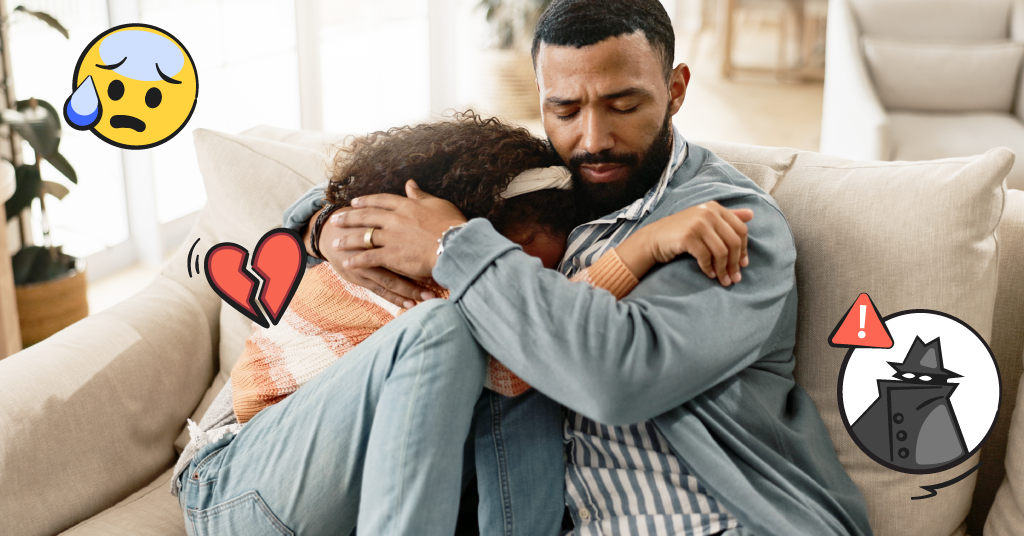
Is your 8-year-old more into giving their dog a makeover than Snapchatting their friends? Are they more likely to read a book about dinosaurs than look at stegosaurus hashtags on Instagram? When your child is still too young to have a cellphone or open up a social media account, you might assume that it’s too early to start teaching internet safety for kids. But even before they’re fully plugged-in, it’s important to start laying the groundwork for their understanding of digital safety.
Having regular conversations now can strengthen your relationship and pave the way for healthy tech use in the future. Plus, there are plenty of ways that your child can practice the safe use of technology now.
Keeping Kids Safe Online
When you begin to have conversations about online safety with your kids, you might be tempted to focus on just the potential dangers of technology. But make sure you take a balanced approach so your kid develops a healthy relationship with being online. Use relatable examples of the benefits of technology from your child’s own life. For example, talk about how they like to listen to Disney music from your phone or show them how you can use a weather app to see what the temperature will be like outside. Say, “We can send Aunt Debbie messages on my phone, and that’s great! But bad people can also try to send us messages, and we never answer those.”
Talk About Existing Limits
Even if your child isn’t quite ready for their own phone or social media account, they probably already use technology for at least some activities. They might watch Peppa Pig on a tablet or use your cellphone to take selfies to send to Grandma. Prepare them for when they’ll get more tech privileges by talking about how important it is to stick to your family rules now. Say something like, “You know how you aren’t allowed to download apps on my phone? That’s important because some apps are not safe for kids.”
Discuss Their Friends’ Usage
You might assume that your child doesn’t have access to a phone unless you give them one, but that isn’t necessarily true. Their friends' families might have different technology rules than you do, so it’s important to talk about what your child should do if they see something inappropriate on someone else’s device. Ask them if they ever use a phone, tablet, or computer when they’re at someone else’s house, and set rules for what they should do if they’d like to use the internet during a playdate. Should they call you and ask? Do they need to check in with their friends' parents?

Discuss What Privacy Means
Your kid already understands what privacy means in real life, so point familiar examples when you’re talking about privacy online. Say something like, “You know how we’ve talked about only sharing our home address with people you know? You might want to think about when it’s OK to have your picture taken, too.” You can practice this now by asking for their approval before you post a video from their school play to Facebook or Instagram. When it’s time for them to have more access to the internet, it’s important for them to think about how they’re presenting themselves. Let them know that they don’t need to share their every thought or moment online.
Teaching Internet Safety For Kids by Example
One of the best ways to teach your kid about healthy tech use before they’re old enough to have a phone themselves is to lead by example. Kids have a tendency to copy the adults in their lives — both the good and the bad parts. So let them see you setting aside dedicated tech-free time to unplug. Say, “It’s time for me to put away my electronics.” Or, “I’m not sure who sent me this Twitter message, so I’m going to ignore it.” As you continue to model this behavior, you’ll be teaching internet safety without having to always walk them through every lesson.
Explain What to Do If Something Goes Wrong
Even if you don’t think your kid has access to texting or TikTok, now is the time to start talking about what your child should do if they experience something negative online. Tell them that they can always come to you if they see something that upsets them or if a stranger sends them a message — you’ll help them through the situation without getting angry.
Keeping kids safe online isn’t easy, but instilling into your kids the importance of digital citizenship will better prepare them for the future. Bark can help you with teaching internet safety as well as help keep your child safe online. Our award-winning monitoring service alerts parents and guardians when there’s a potential issue they need to know about — including cyberbullying, sexting, online predators, depression, suicidal ideation, threats of violence, and more. to monitor texts, chat, email, YouTube, and 24+ social media platforms for signs of digital dangers and get one week of our service completely free!
Read more
Bark helps families manage and protect their children’s digital lives.






